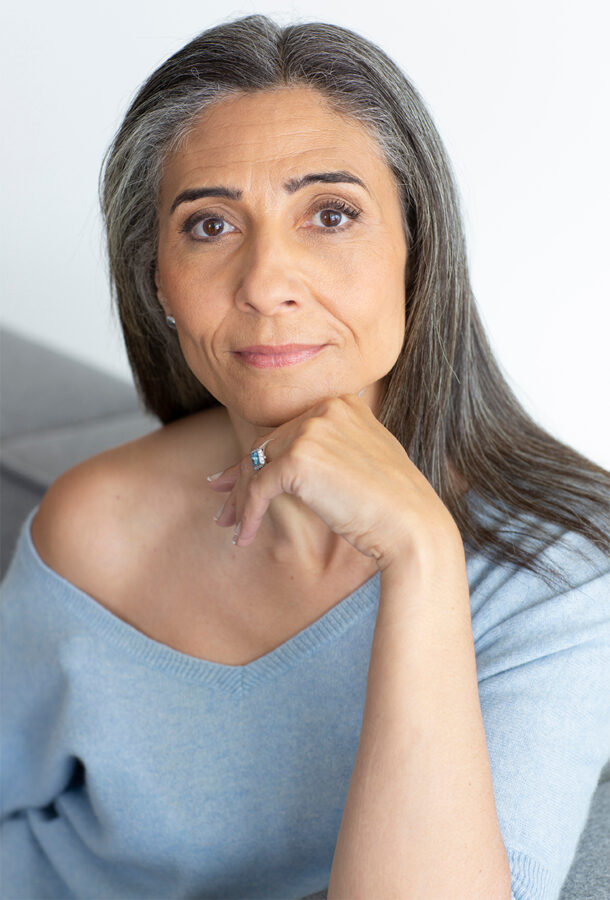Mrs Marie B. – Public writer
An auditory renaissance.
My name is Marie, I am 50 years old and I live in Brittany. In May 2016, following a very loud and high-pitched child’s cry, very close to my ear, I fell into hyperacusis. For a month, I continued my work as a Breton teacher in schools, very disturbed by the noises and the screams, but I was able to hold on. I tell myself that it will pass with time. I wanted to finish the school year without sick leave. A month later, my condition worsened in a very worrying way following an African dance performance, during which I was wearing earplugs recommended by a hearing aid specialist. They were insufficient and unsuitable, but I didn’t know that at the time. As a result, I became really hearing impaired. I can’t stand any unmuffled noise. I have to be spoken to quietly, I find it difficult to share meals with other people, I become isolated and my morale collapses. I have to leave my job.
For four long years, punctuated by slight improvements and relapses, I had almost no hope of returning to a ‘normal’ life. I am living a real hell, like all the people affected by disabling hyperacusis. I’m in a tunnel and I can’t see the end.
In February 2020, I met a wonderful person who empathised with what I was going through. We became instant friends. A few days later, this friend sent me an internet link to the ØREBLUE® method, telling me: it’s far away, it’s expensive, as there is no social security cover, you’ll have to organise yourself… but it’s worth a try! I can’t believe my eyes, because in 2016, in the first months of my hyperacusis, I couldn’t find any hopeful information on the Internet. I was demoralised and stopped searching. That evening, I watched the videos and read the testimonies on the website and within a few hours hope was reborn! What if this method worked for me too? The very next day, I phoned the Institute and had a long talk with Yves Bonneyrat. During this exchange, I immediately felt understood and I already appreciated his human qualities, he was very attentive and very aware of what people with hyperacusis experience on a daily basis. This reinforces my hope. I made arrangements with my parents for my son’s care and called Yves Bonneyrat back a day later to set up a schedule of sessions following the assessment. The first confinement shifted the start of my therapy to mid-May 2020.
On Friday 15 May 2020, I finally meet Natacha Chetritt-Bonneyrat for a rich and intense assessment that will last about five hours. I was immediately struck by the quality of her listening skills, her liveliness of mind, her professionalism and her involvement, all of which were confirmed throughout the therapy. I have confidence and I am convinced that I am in the right place with the right person to start my path to recovery.
On Monday 18 May, I am very anxious before the first listening to the headphones. I am afraid that it will be too loud. I am afraid of suffering too much and that the pain will last, which is what I have been experiencing on a daily basis for the past four years. Yves Bonneyrat welcomed me and accompanied me with such kindness just before this first session that I immediately said to myself: “With these two people, I am really in the best hands, I will get through this! I hope so! The first listening session goes well. It’s not too loud. I was surprised and relieved! The sessions follow one another, with ups and downs concerning the pain, but I hold on because I feel that work is slowly but surely taking place.
Two weeks after I started the therapy, I already noticed an improvement when I went shopping in La Rochelle: the beeps of the checkout counter no longer hurt my ears as much. When I returned home, after three weeks of therapy, I noticed a clear change in my daily life: I can finally handle dishes and cutlery without clogs, something unthinkable before the therapy. Talking to people around me has become more pleasant. I am less on edge and suffer less often and less intensely. My hope is growing. My morale is rising!
After the first session I gained 15 decibels, then 10 decibels after each session until the sixth session, when my tolerance levels were almost normal. My tinnitus was mild from the start, sometimes increasing during the session or in the days following, then dropping to a very tolerable level. Emotionally it took a little longer than “mechanically”. I finished my therapy at the end of April 2021 and have been progressing steadily over the months since.
At the end of May 2021, I finally dared to attend family dinners again, which I had not been able to attend for 5 years! This is perhaps what I have missed the most since June 2016.
Since September 2021, I have been taking traditional singing lessons, in Breton. This allows me to push my limits a little in the pleasure of singing and conviviality, gradually, and I observe a significant evolution. I am less and less afraid of loud sounds and this strengthens my self-confidence, which is the key to continuing to progress!
Like many people who, like me, have escaped from the hell of hyperacusis thanks to the ØREBLUE® method, I cannot thank Natacha Chetritt-Bonneyrat and her husband enough for providing me with the precious help I needed, with remarkable professionalism and kindness.
I encourage anyone suffering from hyperacusis to embark on this great adventure of recovery with them!
Courage to all.
Take hope, because the possibility to get out of hyperacusis exists thanks to the ØREBLUE® method.
I wish you all the best.
THANK YOU to Natacha and Yves Bonneyrat for their involvement and their unfailing support.

